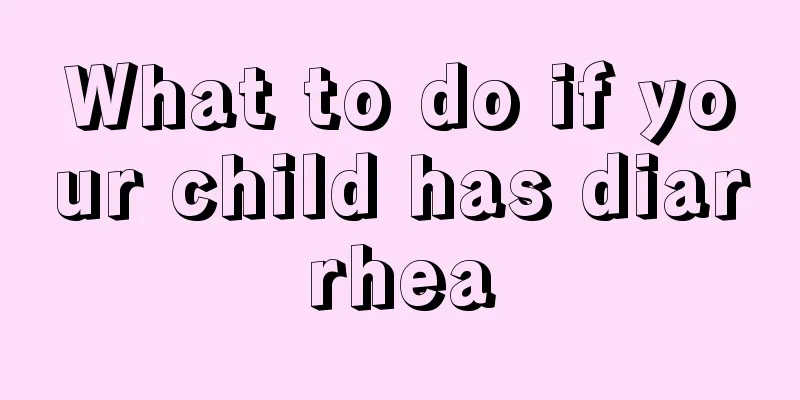Baby has dark brown stool

|
The main food source for babies is breast milk, so the feces they excrete are light yellow and unformed. And because babies do not have the ability to defecate independently, their defecation needs to be controlled by their parents. At this time, parents can directly observe the color and shape of the baby's stool. If the baby's stool is dark brown and very different from other times, what is going on? 1. Green-black, sticky baby stool, also known as meconium: usually similar to tar. Meconium is the first stool after a baby is born, formed by residues brought in by the amniotic fluid. It looks black with green tints, which is normal because it contains bilirubin, a degradation product of red blood cells. It is normal for babies to excrete such stools within 3 days after birth, and mothers don't need to worry. 2. Yellow, loose stools, also known as breastfed baby stools: usually yellow and coagulated. Breast milk contains perfect nutrition. The poop of breastfed babies generally does not smell bad. When they poop, they fart loudly, which makes them sound like they are pooping a lot. If your baby is breastfed, this type of bowel movement will continue until formula or solid foods are introduced. 3. Yellowish brown, thick stools, also known as formula-fed baby stools: usually in a mushy consistency. This stool is a byproduct of formula feeding, either from exclusive formula feeding or from supplementing breast milk. During this stage, mothers should be concerned when stools are hard or watery. 4. Green-brown, mushy stool, also known as solid food mixed baby stool: This is a mixed product of daily food and is normal. Greenish-brown stools usually appear when babies start eating solid foods, but you may have seen this color before then. This color of baby stool is generally normal, but if the baby has other symptoms that worry you, it is best to consult a doctor for professional advice. 5. Watery, brown, loose stools, also known as diarrhea-type baby stools: usually watery and mixed with lumps. An occasional diarrhea in babies isn't a cause for alarm, but if it lasts for two days or longer, it could be diarrhea. Diarrhea can cause dehydration and may also be a sign of infection. This infection is not usually dangerous, but dehydration due to the loss of large amounts of fluids through diarrhea should be a cause for concern. Your baby will need to be given supplemental fluids - either formula and water, or multiple breastfeedings. 6. Dry, brown, hard stools, also known as constipated baby stools: usually have an appearance and texture like dirt, clay or pebbles. Occasional constipation is real, especially for formula-fed babies. Blood may occasionally be seen on the surface of this type of stool. This is because the dry and hard stool causes mild tears to the soft tissue around the anus. 7. Pink, semi-digested food, also known as artificial color-changing baby stool: the baby will excrete stool that looks similar to the food he eats. Once your baby starts eating solid foods, you'll notice that his stools change in color and texture with each meal. |
<<: Is it OK for a baby to sleep on his tummy?
>>: Trachoma symptoms in children
Recommend
The dangers of a child having a persistent fever of 38 degrees
If a person's body temperature is around 38 d...
Baby hits forehead
If we have a baby's fracture, head injury wil...
What should I do if my child has tonsillitis and hoarseness?
What should you do if your child has tonsillitis ...
How to treat anorexia in children?
Nowadays, in cities, many children are only child...
Three month old baby has white spots on face
If a three-month-old baby has white spots on his ...
Can I squeeze the abscess on my child's leg?
Sometimes, we can always see some pustules on our...
What to do if your baby poops many times a day
Many babies have the problem of defecating many t...
What should I do if my two-year-old baby suddenly stutters?
There are many people who stutter in our daily li...
Symptoms of hand, foot and mouth disease in children
Hand, foot and mouth disease is a very common dis...
Sores on the child's arm
In life, many people often get sores on their ski...
What should I do if my five-month-old baby has a fever of 38 degrees?
Babies have very low resistance and are very like...
What are the development indicators of a 16-month-old baby?
The baby is the future of mom and dad, the contin...
Why is my seven-month-old baby's stool green?
Although breast milk is the most natural and nutr...
What should I do if my child has warts?
Warts are actually a skin disease, which usually ...
Symptoms of medulloblastoma in children, be alert after reading this!
After the baby is born, a detailed physical exami...









